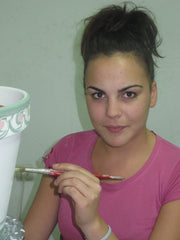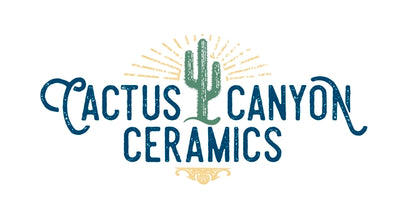Spanish Artisans
There is much to enjoy about Spain. History permeates the cities and pueblos and everywhere there are many cathedrals, museums and moments to visit and explore. The food, tapas and spirits are wonderful to sample, whether in Spain or anywhere. Spanish festivals and fun, and the traditions and culture events are exciting and interesting to delve into.
Hand painted Spanish pottery is part of the fabric of the culture in Spain. For centuries many pueblos have specialized in the production of pottery due to the quality of the soils nearby. In several of the pueblos, you can find more than 50 different workshops or factories that produce clay based products. Painting and potting techniques are passed from generation to generation.
It is fascinating to watch the skill of the Spanish painters and potters. This page is dedicated to the artisans that produce the pottery. Here you find short interviews, photos and links to videos about the artisans and their craft. We plan to do at least one interview a month which we will also put into our monthly email. Please subscribe to our email list if you would like to receive these interviews in your inbox. Thanks.

Tuesday, January 27th, 2015
Gertru is ready to laugh. She always has a twinkle in her eye and a smile on her lips. Gertru works with Nany and is very a very skilled painter of garden pots and patio accessories. Very soon, there will the notes from a short interview with Gertru posted here.
I stopped by to visit with Gertru in April of 2015 and she had retired!! Good job Gertru! I wish you many happy "retired" years with your family and friends!

Isa L.
Tuesday, January 27th, 2015
I had the opportunity to chat with Isa when it was cold out and the painters had heaters under the tables and shawls over their labs to keep warm. Isa is very cheerful and always has a big smile on her face. Isa told me that she was born in Bailen, where she works and lives. She has been painting for 16 years and she is only 29 years old!! She must have been a handful in high school, because her Mom "kicked" her out of the house and told her to find a job to keep her busy. She talked to her Uncle Julian who gave her a spot on painting crew in his factory. During her school years she painted during the summer and also during the extended vacation breaks. She picked up painting rapidly and is quite talented. Isa said that at first it was hard because she would much rather spend time with friends rather than work, but she said that pretty quickly she learned to enjoy the painting.
While at school, Isa studied to be a clinical assistant which qualifies her to work in medical clinics, rest homes or other types of care providing organizations but she quickly learned that she would have to move to a larger metropolitan area to find work as a clinical assistant, so she decided she would stay in Bailen and paint.
Isa is married and she told me with a huge, proud smile that she is the mother of Alonso, a strapping and busy 4 year old. Isa’s husband is a truck driver. When Isa is at work, the extended family helps take care of Alonso. Isa is the only one in her immediate family that is working in the ceramic industry. As per the types of things she likes to paint, Isa said that she enjoys painting almost any design, except on the small pots because the design is simplified to fit usually, and painting small pots can kind be a drag once in a while.
We talked a bit about the world and Isa said that for her dream vacation she would go to Thailand and explore the temples, beaches and jungles. Isa and her husband originally had plans to go there for their honeymoon, but were not able to go at the last minute. It is still on her list though and hopes to get there in the not to distant future.
Pilar
Wednesday, March 18th, 2015
I work quite a bit with Luciano in La Rambla, Cordoba. It is always fun to visit with Luciano. He has a coffee machine in his office and if it is mid-morning or after lunch he always treats me to a stiff caffeine shot. If I arrive for a visit during spring or summer, sometimes Luciano will take me out to the huge 2 acre, family garden behind his factory and load me up a couple of bags with vegetables to take home. Luciano is intimately involved in all details of workin the family factory (along with Alejandro his brother). Luciano works closely with his painters and is the principal designer. If there is any confusion, Luciano does mock up of how it should look or if they are brain storming new designs. I sat down with Pilar who is one of the experienced painters working at Luciano's factory. Pilar has a shy, ready smile and seems to be an intense and talented painter. Pilar told me she was born in La Rambla, where she currently works and lives. Pilar explained that she has been been painting for approximately 8-9 years now. After high school, Pilar attended a technical school in Monteria, which is a neighboring pueblo to La Rambla. Pilar said that she studied to become a hair stylist and beautician but after her studies, found it hard to get a job in the field locally. Her father is good friends with Alejandro and through the connection she found work with Luciano and Alejandro.
Pilar told me that when she first started painting, it was mostly with large brushes filling large spaces. Once she gained some experience, she started to use the pera to apply slip detailing details and then shortly after that she began to paint pictures. She said that it wasn’t really hard for her to learn to paint, ...and that she caught on quickly. Pilar likes the flat surfaces best for painting. Some of the odd shapes are rather awkward for rotating and small spaces that are not the same canvas as a flat piece.
Pilar lives with her Mom and Dad and a younger brother by 4 years. In her immediate family, she is the only one working in the ceramic industry. I asked Pilar where in the world she would go to explore and she said Puntacan in the Caribe. She said that she has always heard about it, and it sounds like a wonderful place to visit.
Ani
Thursday, June 11th, 2015
Ani is an incredibly talented painter. I love to watch her paint and she is always so up beat and happy that she is a joy to visit. Ani is the mother of 4 grown children, and she is the very proud and happy grandmother of three beautiful grandchildren. Ani's grown children all work in the pottery industry.
Ani was born into a potter family when the botijo market was at its peak. Botijos are water jugs that keep water cool by "sweating". Botijos were very important in Spain when there was little refrigeration. Ani and her two sisters worked exclusively in potting and decorating pots from their earliest years. Work took precedence over everything else, even school when she was young. The production of botijos was incredibly labor intensive. Ani explained the process to me and I wrote a post about it on the Cactus Canyon Wordpress Blog. Click here for a link to the blog post.
Ani’s Dad was a potter so of course he made the pots. The clays in La Rambla are white and porous – perfect for botijos and other pots such as the botijo con cuerda (with a strap), huchas, jarras, jarros y donillos for gazpacho. Ani and her sisters started decorating pots at a very young age (7, 8 & 9 years old). They started with designs made with their fingers and thumbs, but as Ani and her sisters grew older and more experienced (around 14 years old), they sewed triangular “manguillas” with tips to apply liquid clay. The manguillas were very similar to a pastry bag used for decorating cakes with frosting. Manguillas are no longer used and instead the painters us a “perra”, which is a rubber bulb shaped device with a tip.
Some of the first slip trailing designs that Ani did was white on white. Basically, using the same white clay for decorating as was used to make the pot. The white on white provided a surface relief and textures. Colors were not in wide use until a decade later.
Ani is a great Spanish painter. It was fun to interview her and learn a little about the history of potting in Andalusia.


 Pilar
Pilar Ani
Ani